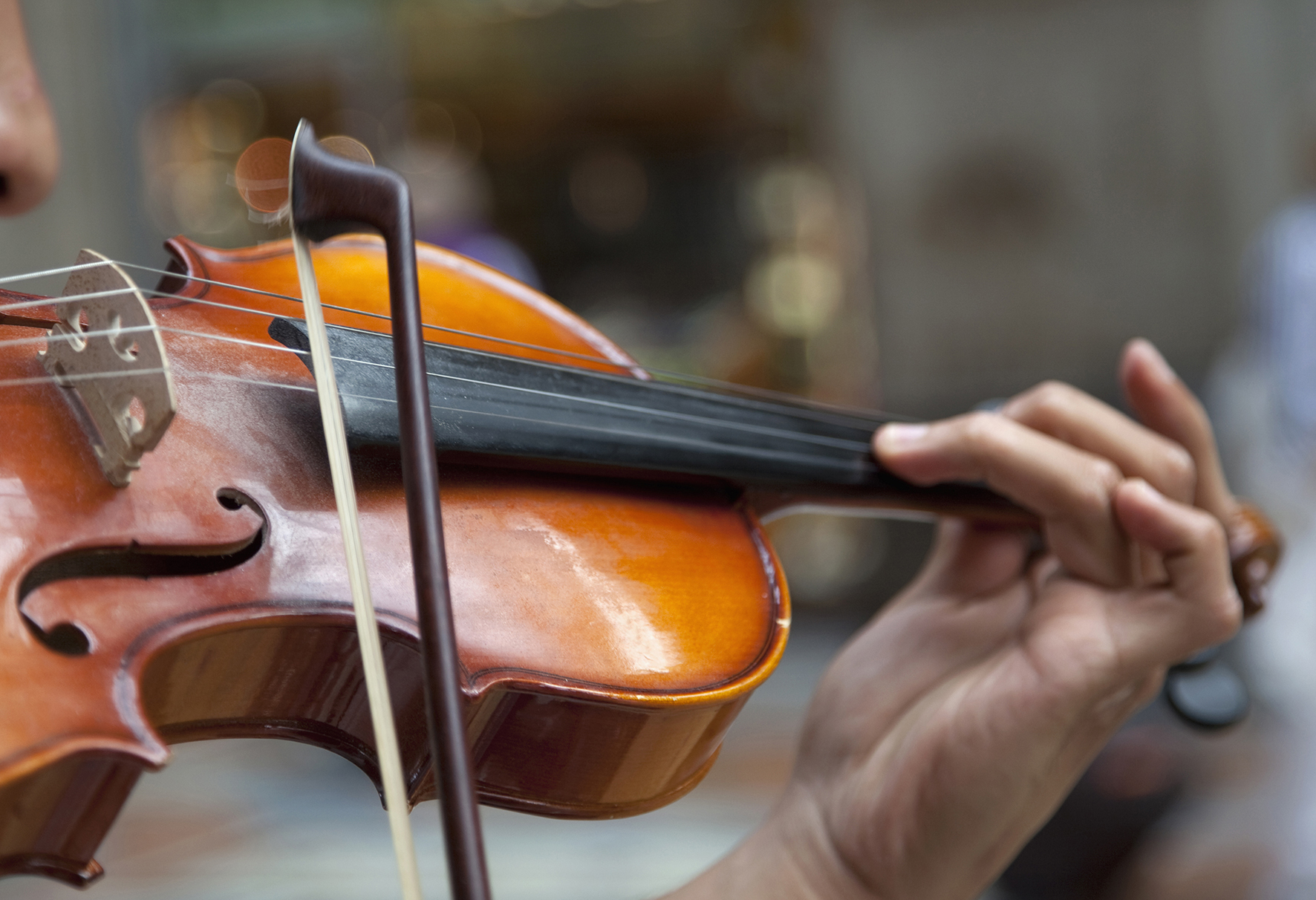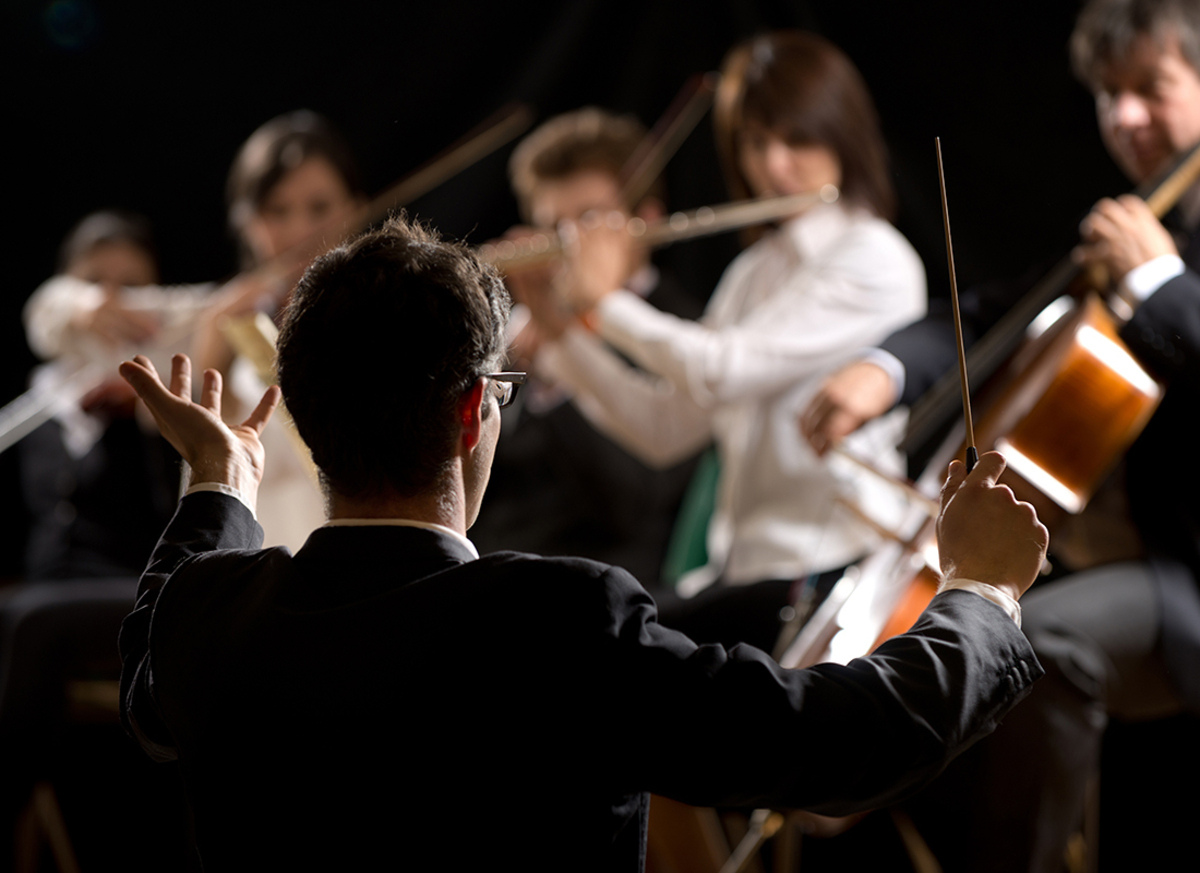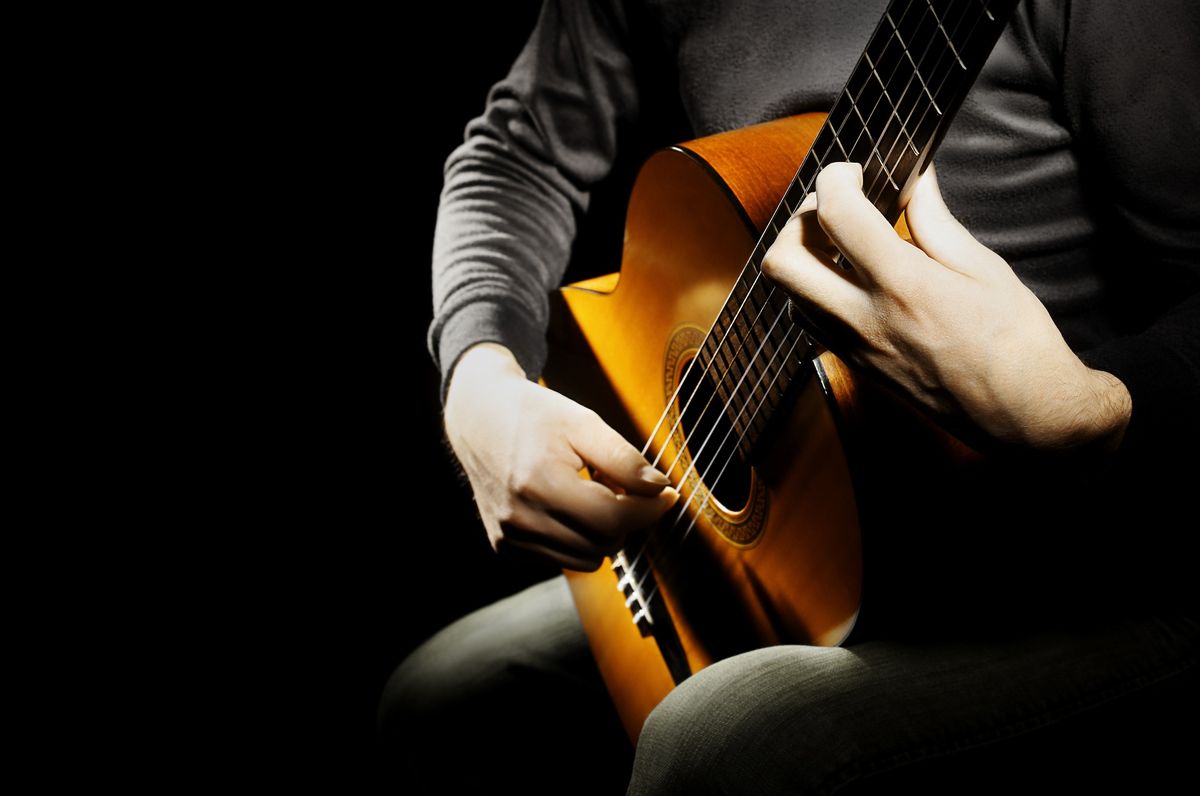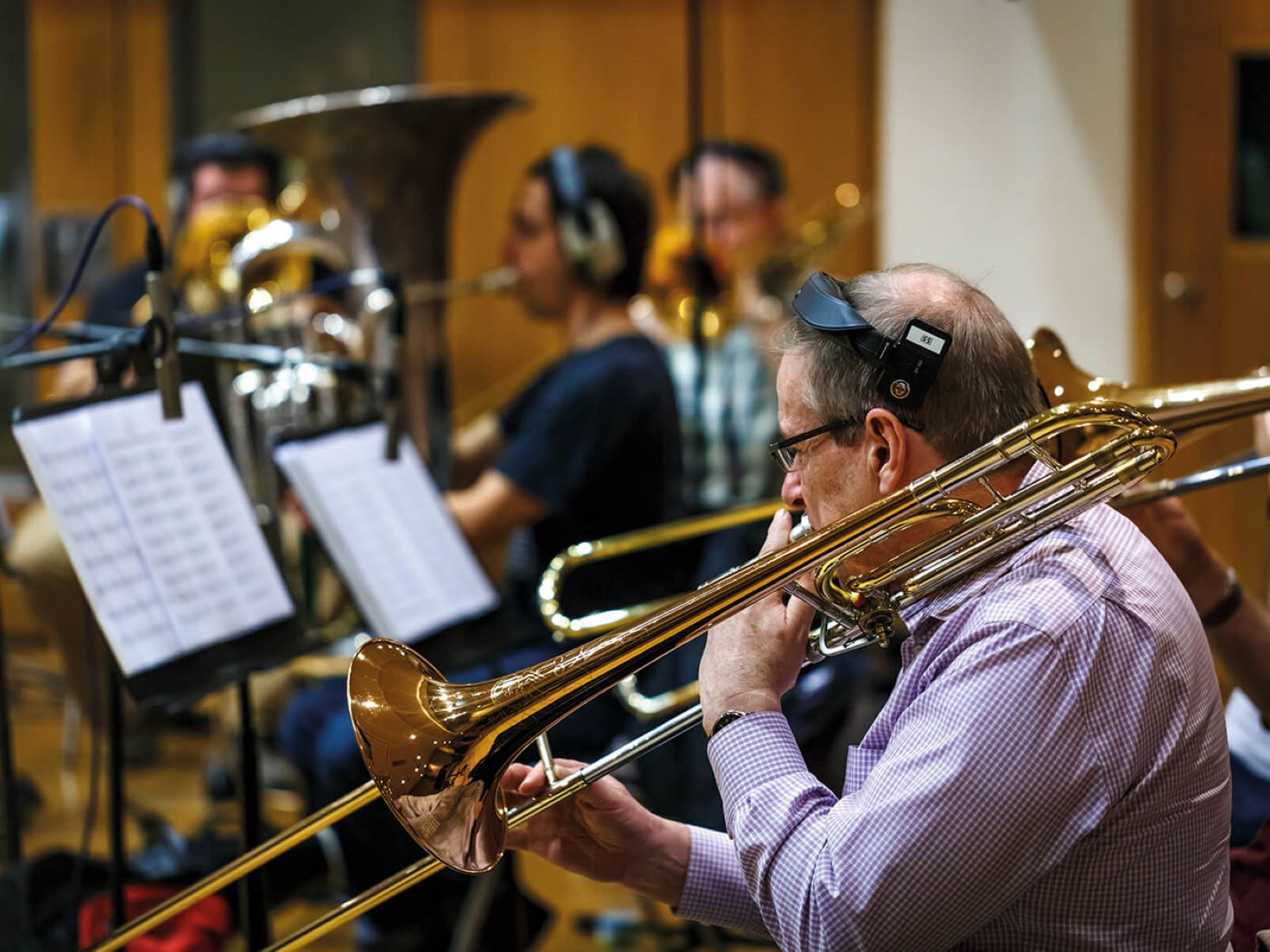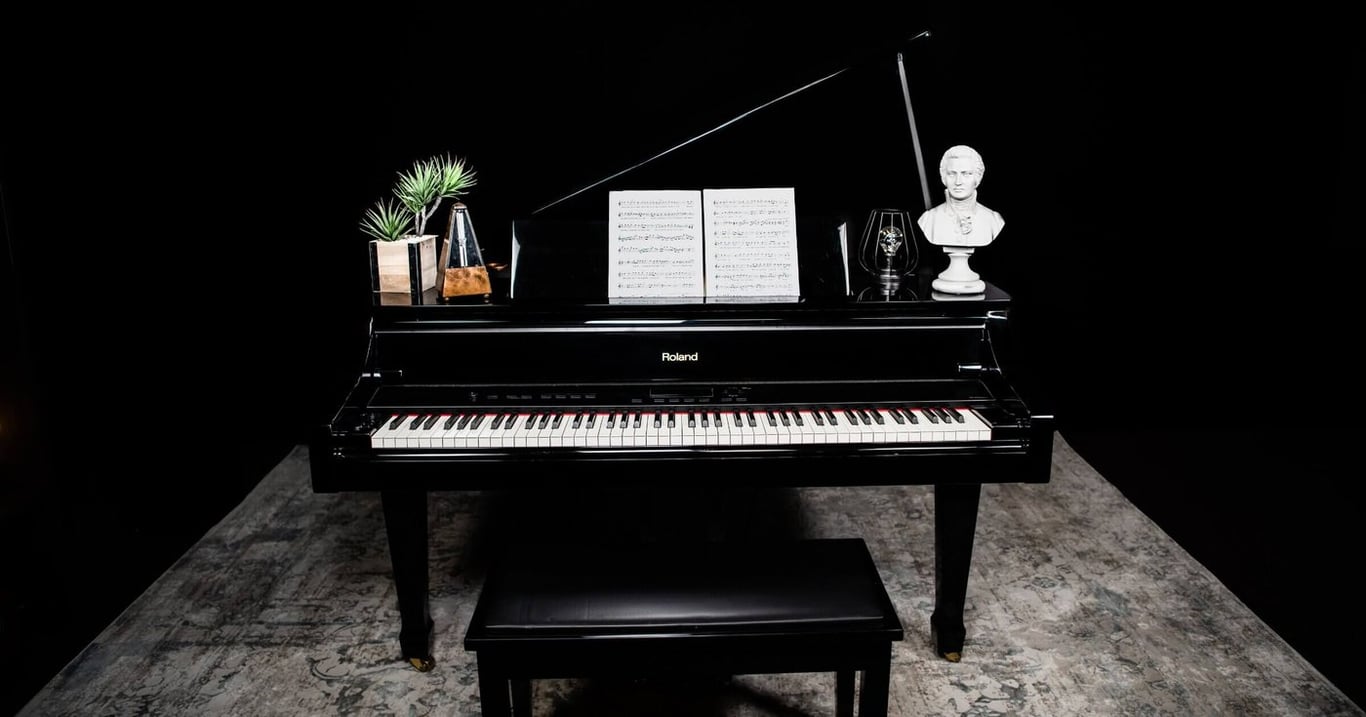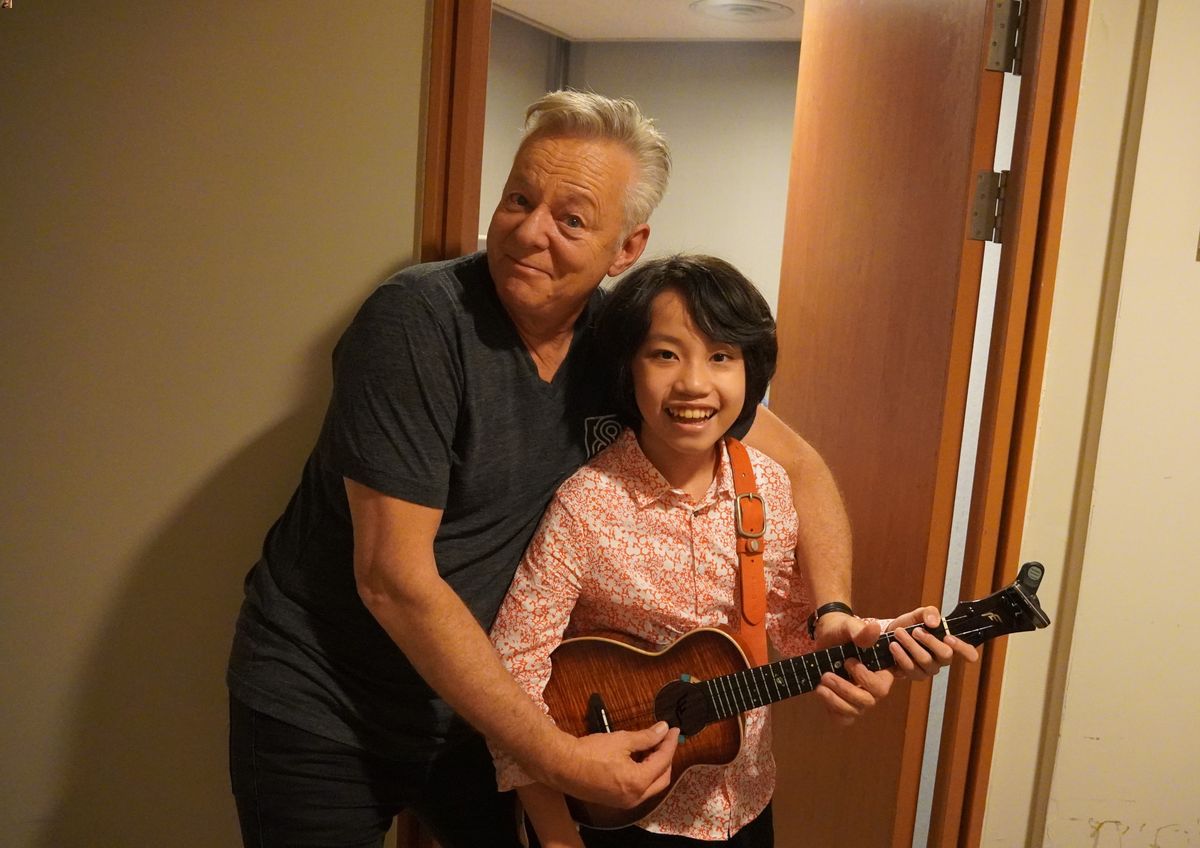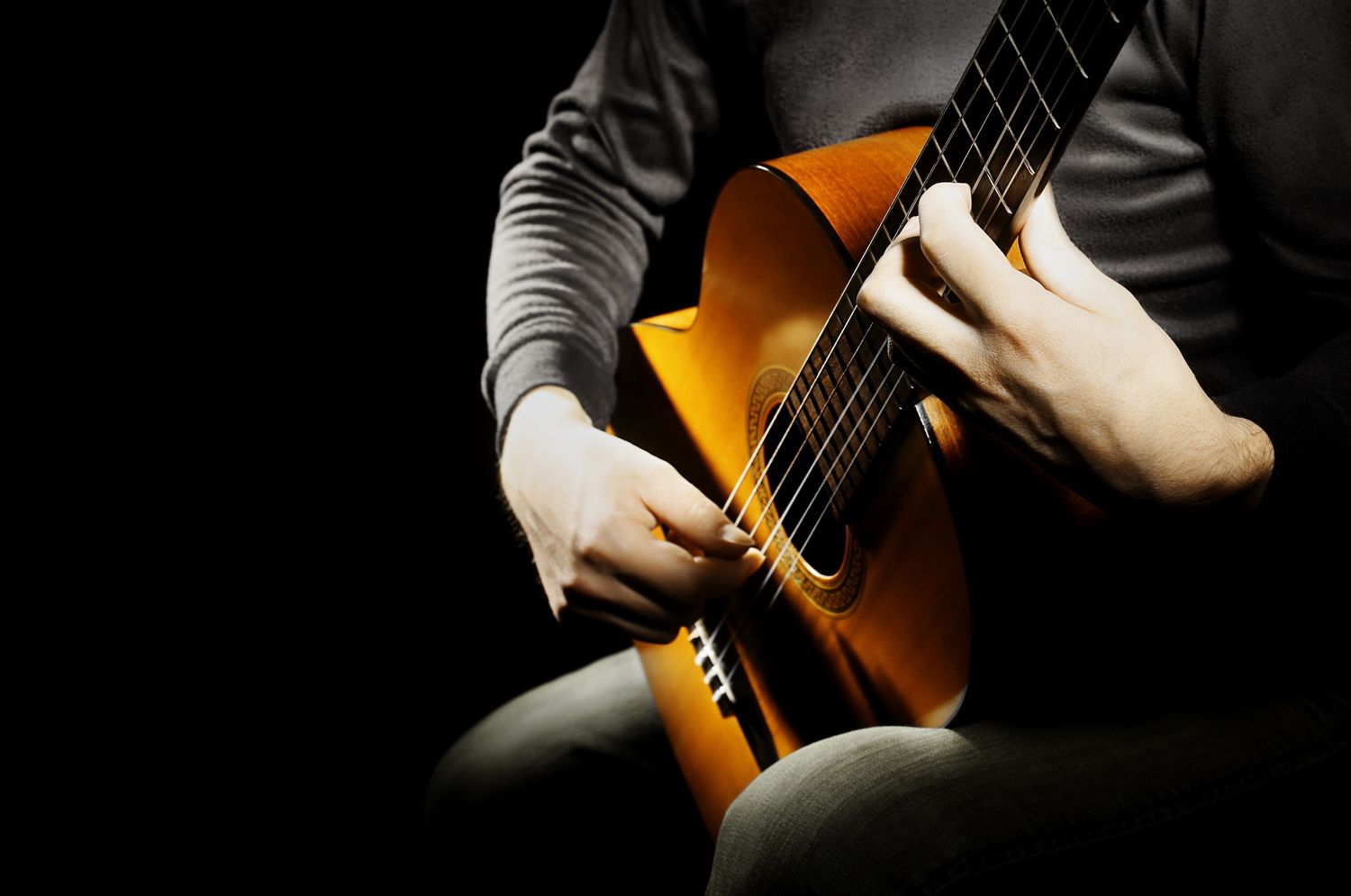Home>Genres>Classical>What Role Did Woodwinds Primarily Play In The Classical Orchestra
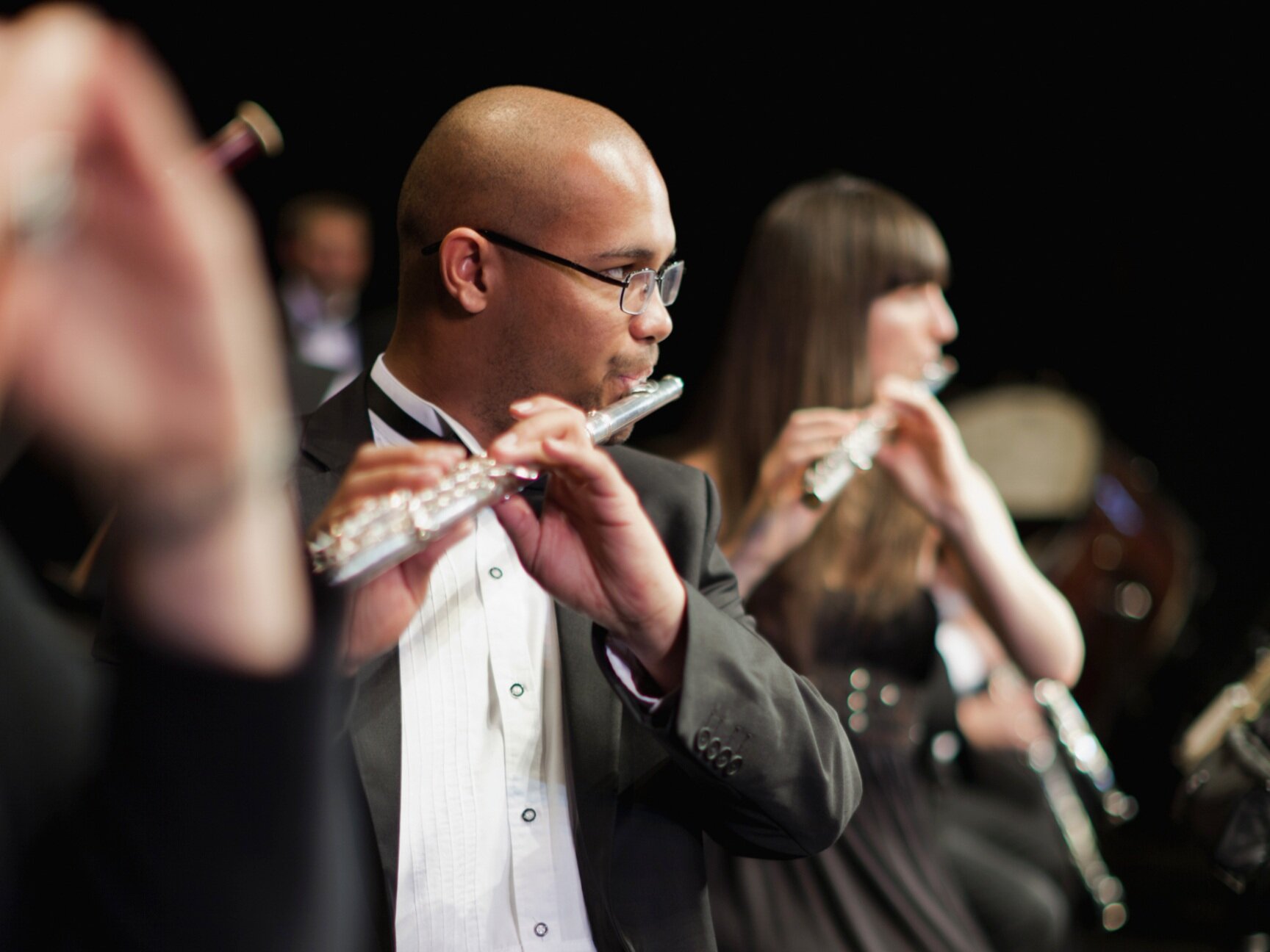

Classical
What Role Did Woodwinds Primarily Play In The Classical Orchestra
Modified: February 24, 2024
Discover the role woodwinds played in the classical orchestra and their significance in shaping the beautiful melodies and harmonies of this timeless genre.
(Many of the links in this article redirect to a specific reviewed product. Your purchase of these products through affiliate links helps to generate commission for AudioLover.com, at no extra cost. Learn more)
Table of Contents
- Introduction
- Evolution of the Classical Orchestra
- Overview of Woodwind Instruments
- Woodwind Instruments in the Classical Era
- The Roles of Woodwinds in the Classical Orchestra
- Soloistic Features of Woodwind Instruments
- Woodwinds as Supporting Voices in the Orchestra
- Woodwinds in Orchestral Texture and Harmonic Function
- Notable Compositions Highlighting Woodwind Instruments
- Conclusion
Introduction
The Classical era, which spanned from approximately 1750 to 1820, was a time of great musical innovation and sophistication. It was during this period that the modern orchestra as we know it today began to take shape. Composers such as Mozart, Beethoven, and Haydn pushed the boundaries of orchestral composition, creating intricate and majestic works that showcased the full range and depth of sound.
One of the key elements of the Classical orchestra was the woodwind section. Woodwind instruments, with their distinct timbres and versatility, played a vital role in shaping the sound of the orchestra and adding depth and color to the music. From the sonorous bassoon to the ethereal flute, these instruments brought a unique flavor to the Classical compositions.
In this article, we will explore the role that woodwinds primarily played in the Classical orchestra. We will delve into the evolution of the orchestra, the different types of woodwind instruments, and the specific roles they played in this influential period of music history. From their soloistic features to their supporting roles in the orchestra and their impact on orchestral texture and harmonic function, we will shed light on the fascinating world of woodwinds in the Classical era.
Evolution of the Classical Orchestra
The evolution of the Classical orchestra was a gradual process, influenced by the changing musical tastes and technological advancements of the time. In the Baroque era, the orchestra consisted mainly of strings with a small number of wind instruments and continuo instruments such as harpsichords and organs. However, it was during the Classical era that the orchestra underwent significant changes, both in terms of instrumentation and organization.
One of the most significant developments was the standardization of the orchestra’s size and instrumentation. Composers began to favor a larger ensemble, which typically included four sections: strings, woodwinds, brass, and percussion. This expansion allowed for greater variety and richness of sound, enabling composers to express their musical ideas with greater depth and complexity.
Another important aspect of the Classical orchestra’s evolution was the inclusion of more wind instruments, particularly woodwinds. In the earlier Baroque period, the woodwind section was limited to instruments like the recorder and the transverse flute. However, during the Classical era, new instruments were introduced, such as the clarinet and the bassoon, which added a whole new range of colors and textures to the orchestra’s sound.
The rise of the public concert also played a significant role in shaping the Classical orchestra. As concerts became more popular and economically viable, composers sought to create music that would captivate and entertain audiences. This led to a greater emphasis on contrasts and dynamic expression within the orchestra, with woodwinds contributing to the overall sonic palette.
In summary, the evolution of the Classical orchestra was characterized by the standardization of size and instrumentation, the inclusion of more wind instruments, and the demand for music that appealed to a wider audience. These factors laid the foundation for the prominent role that woodwinds would play in shaping the sound and character of the Classical era’s orchestral compositions.
Overview of Woodwind Instruments
Woodwind instruments are a family of instruments known for their ability to produce sound by the vibration of air columns within a tube. These instruments are characterized by their use of a mouthpiece, reed, or blowing mechanism to create musical tones.
In the Classical orchestra, the woodwind section typically consisted of four primary instruments: the flute, the oboe, the clarinet, and the bassoon. Each instrument has its own unique characteristics and range, allowing for a diverse array of sounds and textures within the orchestra.
The flute, a member of the woodwind family, is a cylindrical tube with finger holes. It is played by blowing across the edge of a mouthpiece, creating vibrations that produce sound. The flute has a bright and piercing tone, capable of both delicate and agile passages as well as bold and virtuosic melodies.
The oboe, with its distinctive double reed, has a warm and expressive tone. Its wooden body produces a rich and resonant sound. The oboe’s unique timbre allows it to stand out in the orchestra, often assigned solo lines or melodic motifs.
The clarinet, another prominent woodwind instrument, features a single-reed mouthpiece. It has a broad range and a versatile sound that can be smooth and mellow or vibrant and lively. The clarinet is capable of expressing a wide range of emotions, making it a valuable asset in the Classical orchestra.
The bassoon, the lowest-pitched woodwind instrument, has a double reed and a long, conical tube. Its deep and resonant tone adds a rich and sonorous quality to the orchestra. The bassoon often plays a supporting role, providing a solid foundation in the low register of the woodwind section.
In addition to the primary woodwind instruments, the Classical orchestra also included auxiliary instruments such as the piccolo, the English horn, and the contrabassoon. These instruments were used to add variety and depth to the woodwind section, expanding the timbral palette of the orchestra.
Overall, the woodwind instruments in the Classical orchestra each bring their own unique qualities to the ensemble. From the bright and agile sound of the flute to the rich and expressive tones of the oboe, clarinet, and bassoon, these instruments play a crucial role in shaping the overall sound and character of Classical orchestral compositions.
Woodwind Instruments in the Classical Era
The Classical era witnessed significant advancements and innovations in woodwind instrument design and construction. During this period, the production techniques and materials used in crafting woodwind instruments improved, resulting in instruments with enhanced tonal quality and greater playing capabilities.
One of the notable developments during the Classical era was the widespread adoption of the clarinet. The clarinet, with its versatile sound and wide range, quickly gained popularity among composers and performers. Composers such as Mozart and Beethoven prominently featured the clarinet in their compositions, showcasing its expressive capabilities and blending it seamlessly with other instruments in the orchestra.
Another key woodwind instrument that found its place in the Classical orchestra was the bassoon. With its deep and resonant tones, the bassoon added richness and depth to the ensemble. Its expressive capabilities and ability to navigate both lyrical and virtuosic passages made it an invaluable asset for composers seeking to create contrasting textures and colors in their music.
The flute also continued to evolve during the Classical era. The development of keys and improved embouchure techniques allowed for greater control and flexibility in playing. Composers such as Mozart and Haydn explored the flute’s full range, exploiting its capabilities both as a solo instrument and as part of an orchestral ensemble.
While the oboe did not undergo significant changes in design during the Classical era, it continued to play a crucial role in the woodwind section. Composers relied on the expressive capabilities of the oboe to convey a wide range of emotions, often utilizing its unique tonal qualities in solo passages and melodic lines.
Additionally, the Classical era saw composers experimenting with auxiliary woodwind instruments. The piccolo, a smaller version of the flute, provided a piercing and vibrant sound, adding a touch of brilliance to the orchestral palette. The English horn, a variant of the oboe, offered a distinctive and melancholic timbre, frequently used to evoke a sense of longing or introspection.
In summary, the Classical era witnessed the expansion and refinement of woodwind instruments, with the clarinet, bassoon, flute, and oboe playing essential roles in the orchestra. These instruments, along with their auxiliary counterparts, brought new sonic possibilities and expressive capabilities to the Classical compositions, contributing to the unique sound and character of this remarkable period in music history.
The Roles of Woodwinds in the Classical Orchestra
In the Classical orchestra, woodwind instruments played a variety of roles, ranging from soloistic features to supporting voices within the ensemble. Their distinct timbres and expressive capabilities allowed composers to craft intricate and dynamic musical textures, adding depth and color to their compositions.
One of the primary roles of woodwinds in the Classical orchestra was as solo instruments. Composers often highlighted the virtuosic qualities of woodwind instruments, allowing them to shine in solo passages and melodic lines. For example, Mozart’s Clarinet Concerto and Flute Concerto showcase the technical prowess and lyrical abilities of the respective instruments, featuring them as solo voices accompanied by the orchestra.
Woodwinds also played a significant role in providing melodic and expressive lines within the orchestral texture. Composers would often assign beautiful, expressive melodies to woodwind instruments, enabling them to convey a wide range of emotions. The woodwinds’ ability to produce delicate and nuanced tones made them well-suited for expressing lyrical passages and adding a sense of grace and elegance to the music.
In addition to their melodic roles, woodwinds also functioned as supporting voices within the orchestra. They provided harmonic support and filled out the ensemble’s sound, adding depth and richness to the overall texture. Woodwind instruments played crucial roles in creating the characteristic orchestral sound, blending with the strings and brass sections to form a cohesive and balanced ensemble.
Furthermore, woodwinds often played a critical role in creating dynamic contrasts within orchestral compositions. Composers utilized the wide range of dynamics and expressive techniques available to woodwind instruments to create moments of tension and release, enhancing the emotional impact of their music. The ability of woodwinds to produce softer and more delicate sounds, as well as their agility in executing rapid passages, allowed composers to explore a wide spectrum of expressive possibilities.
Overall, the woodwinds in the Classical orchestra possessed both soloistic and supporting roles. Their versatility and expressive capabilities added depth, color, and emotional richness to the ensemble’s sound. Whether as solo voices, melodic lines, supporting harmonies, or tools for dynamic contrast, woodwind instruments played an indispensable part in shaping the unique character and beauty of Classical orchestral compositions.
Soloistic Features of Woodwind Instruments
Woodwind instruments in the Classical orchestra possess unique soloistic features that allow them to stand out and captivate the audience. Composers during this era recognized the expressive capabilities and virtuosic qualities of the woodwinds and frequently spotlighted them in solo passages within their compositions.
One of the woodwind instruments known for its soloistic prowess is the flute. With its agile and nimble nature, the flute is capable of executing rapid passages and ornamentations with great precision. Composers often wrote dazzling and virtuosic flute solos to showcase the player’s technical abilities. Mozart’s Flute Concerto No. 1 in G major is a prime example that demonstrates the flute’s soloistic potential, allowing the instrument to soar above the orchestra with its brilliant and agile melodies.
Similarly, the clarinet possesses a unique timbre that lends itself well to soloistic expression. Its rich and smooth sound, combined with its wide range and flexibility, allows it to convey a myriad of emotions. Composers such as Mozart and Weber pushed the boundaries of what was possible on the clarinet, composing challenging and emotionally evocative solos. Mozart’s Clarinet Concerto in A major and Weber’s Clarinet Concerto No. 1 in F minor are acclaimed pieces that exhibit the instrument’s soloistic capabilities, exploring the clarinet’s full range, dynamic expression, and lyrical qualities.
The oboe, with its haunting and expressive tone, is another woodwind instrument well-suited for solo passages. Its unique double reed allows for a wide range of tonal colors and expressive possibilities. Composers often utilized the oboe to convey melancholic or tender emotions, highlighting its ability to create lyrical and soul-stirring melodies. Gluck’s “Dance of the Blessed Spirits” from his opera Orfeo ed Euridice features a beautiful oboe solo that showcases the instrument’s lyrical capabilities and its ability to transport listeners to a world of ethereal beauty.
Lastly, the bassoon, with its deep and resonant tones, is occasionally featured in solo passages, particularly in the lower register. While the bassoon is often a supporting instrument in the woodwind section, composers took advantage of its soloistic qualities to add a touch of gravitas to their compositions. Mozart’s Bassoon Concerto in B-flat major is a notable work in the bassoon repertoire that demonstrates the instrument’s solo capabilities, showcasing its agility, expressive range, and unique charm.
Overall, woodwind instruments in the Classical orchestra possess soloistic features that allow them to take center stage. From the flute’s brilliance and agility to the clarinet’s expressive versatility, the oboe’s hauntingly beautiful sound, and the bassoon’s deep and resonant tones, these instruments captivate audiences with their virtuosity and ability to convey a wide range of emotions. Composers utilized these soloistic qualities to create memorable and engaging moments within their orchestral compositions, ensuring the woodwinds’ prominent role in the Classical era’s musical landscape.
Woodwinds as Supporting Voices in the Orchestra
In addition to their soloistic features, woodwind instruments also play a crucial role as supporting voices in the Classical orchestra. They provide essential elements of harmony, texture, and color, working in conjunction with other sections to create a balanced and cohesive ensemble sound.
Woodwinds contribute to the harmonic foundation of the orchestra by filling out the middle and high registers. While the strings provide the foundation with their rich harmonies and the brass sections add power and weight, the woodwinds add a distinct flavor to the overall harmonic palette. Their unique timbres and blending capabilities help to enrich the harmonies and sonorities, creating a more nuanced and layered sound.
Woodwind sections often collaborate closely with the strings to create lush and decorative accompaniments that support the main melodic lines. Composers frequently use woodwinds to add delicate and ornamented figures that enhance the texture and character of the music. The interplay between the woodwinds and the strings can create intricate and beautiful contrapuntal textures, highlighting the expressive qualities of both sections.
Furthermore, woodwinds are adept at creating coloristic effects within the orchestra. Their unique timbres and range of expressive techniques, such as articulation, dynamics, and vibrato, allow them to add distinctive colors and textures to the overall sound palette. Woodwinds can provide shimmering, ethereal effects, whimsical passages, or hauntingly beautiful solos that enhance the emotional impact of the music.
The ability of woodwinds to blend seamlessly with other sections of the orchestra is of paramount importance. Their flexible and adaptable nature allows them to fit harmoniously within the ensemble, creating a unified sound. Woodwinds must listen and respond to the surrounding instruments, adjusting their tone and dynamics to blend effectively and maintain balance in the orchestra.
Moreover, woodwind instruments frequently collaborate with other woodwinds in duets, trios, or larger ensembles within the orchestra. These woodwind combinations create intricate and dialogic passages, adding layers of complexity and interest to the music. Composers exploit the unique characteristics of different woodwind instruments to achieve various timbral and expressive contrasts within these chamber-like settings.
Overall, woodwind instruments in the Classical orchestra serve as vital supporting voices, providing harmonic foundation, decorative accompaniments, coloristic effects, and ensemble cohesion. Their ability to blend with other sections, create rich textures, and contribute to the overall sound palette makes them indispensable elements in the orchestral fabric, ensuring a balanced and captivating listening experience.
Woodwinds in Orchestral Texture and Harmonic Function
Woodwind instruments play a significant role in shaping the texture and harmonic function of the Classical orchestra. Their unique timbres, expressive capabilities, and harmonic contributions add depth, richness, and color to the overall orchestral sound.
Woodwinds contribute to the texture of the orchestra by adding layers of nuanced expression and creating a sense of depth. Their distinct timbres, ranging from the bright and piercing flute to the warm and expressive oboe, provide contrasting colors and tonal qualities that enhance the overall sonic palette. The blending of woodwinds with the other sections of the orchestra, such as the strings and brass, creates a balanced ensemble sound that is both cohesive and dynamic.
In terms of harmonic function, woodwind instruments fill essential roles within the orchestral harmony. They often play a supporting role by providing harmonic foundation and filling out the middle and upper registers of the ensemble. The woodwind section, along with the brass and strings, contributes to the vertical structure of the orchestra, creating chordal textures that underpin the melodic lines. The beautiful harmonies produced by woodwind instruments, especially when combined with other sections of the orchestra, create a lush and harmonically-rich sound.
Woodwinds also play an important role in creating delicate and intricate contrapuntal textures within the orchestra. Composers often utilize woodwind instruments in imitative passages, where melodic ideas are passed between different sections of the orchestra. Woodwinds contribute to the complexity and interplay of voices, combining with other sections to create contrapuntal lines that weave together harmonically and melodically.
Moreover, woodwind instruments can add coloristic effects and create harmonic tension and release within the orchestra. Their dynamic and expressive capabilities allow for subtle nuances in phrasing, articulation, and dynamics that enhance the emotional impact of the music. Woodwinds are often utilized to create delicate and atmospheric passages, adding touches of ethereal beauty or whimsical charm. Additionally, woodwinds can provide moments of harmonic tension through dissonant notes or chromatic passages, leading to satisfying resolutions and contributing to the overall harmonic journey of the composition.
Overall, woodwind instruments play a crucial role in shaping the orchestral texture and harmonic function in Classical music. From providing harmonic foundation and filling out the ensemble sound to creating intricate contrapuntal textures and contributing to harmonic tension and release, woodwinds bring depth, richness, and expressive qualities that enhance the overall musical experience.
Notable Compositions Highlighting Woodwind Instruments
The woodwind instruments in the Classical era were featured prominently in many notable compositions, showcasing their versatility, expressive capabilities, and unique timbres. Composers during this period recognized the distinct qualities of woodwinds and utilized them to create captivating and memorable musical moments.
One of the most celebrated compositions highlighting woodwind instruments is Mozart’s Symphony No. 40 in G minor. In this symphony, Mozart employs the entire woodwind section to great effect, creating a rich and varied orchestral palette. The hauntingly beautiful clarinet solo in the second movement stands out as a particularly poignant and emotive moment, demonstrating the clarinet’s lyrical capabilities and ability to convey deep emotion within a symphonic context.
Beethoven’s Symphony No. 6, also known as the “Pastoral Symphony,” prominently features woodwind instruments throughout the entire work. In the third movement, the oboe and clarinet take center stage, performing nature-inspired melodies that evoke images of birdsongs. Here, Beethoven showcases the expressive qualities of the woodwind instruments, crafting delicate and charming solos that add a touch of whimsy and enchantment to the composition.
Haydn’s Symphony No. 31, commonly referred to as the “Hornsignal Symphony,” showcases the woodwind section through its spirited and virtuosic writing. The symphony features lively and exuberant woodwind solos, particularly in the fourth movement, where the flute, oboe, and clarinet engage in dazzling and playful exchanges. Haydn’s composition highlights the technical capabilities of the woodwind instruments, creating a joyful and uplifting experience for both performers and listeners.
Mozart’s Clarinet Concerto in A major is considered a pinnacle of the clarinet repertoire. This concerto showcases the expressive range of the clarinet, from its warm and mellow lower register to its brilliant and agile upper register. The solo clarinet takes center stage, engaging in a musical dialogue with the orchestra, displaying its lyrical and virtuosic qualities. The clarinet’s ability to emote both tenderness and brilliance is masterfully captured in this iconic composition.
Furthermore, in Tchaikovsky’s Symphony No. 4, the woodwind section, including the bassoon and flute, plays a significant role in creating contrasting moods and providing melodic elements. The woodwinds are featured prominently in the second and third movements, where they contribute to the emotional depth and lyricism of the symphony. Tchaikovsky’s orchestration highlights the expressive capabilities of woodwind instruments, harnessing their power to evoke a wide range of emotions.
These notable compositions exemplify the profound impact that woodwind instruments had on the Classical era’s orchestral repertoire. Through their distinctive timbres, expressive abilities, and virtuosic qualities, woodwinds added depth, emotion, and color to these compositions, leaving a lasting mark on the musical landscape of the time.
Conclusion
The woodwind instruments played a vital and versatile role in the Classical orchestra. Their unique timbres, expressive capabilities, and soloistic features greatly contributed to the rich and diverse musical landscape of the era. From the bright and agile flute to the warm and expressive oboe, the versatile clarinet, and the deep and resonant bassoon, these instruments brought a wide range of colors, textures, and emotions to the compositions of Mozart, Beethoven, Haydn, and other influential composers of the time.
In the Classical era, woodwinds underwent significant developments in terms of design and construction, resulting in instruments with enhanced tonal quality and greater playing capabilities. These advancements allowed composers to fully explore the expressive potential of woodwind instruments, both as solo voices and as supporting voices within the orchestra.
The woodwinds played multiple roles within the orchestral setting. They captivated audiences with brilliant solo passages, showcasing the virtuosic abilities of the performers. Additionally, they contributed to the overall texture of the orchestra, providing harmonic foundation, creating delicate and intricate contrapuntal textures, and adding coloristic effects that enhanced the emotional impact of the music. Furthermore, woodwinds worked harmoniously with other sections of the orchestra to create a balanced ensemble sound, blending their timbres with the strings, brass, and percussion, and contributing to the cohesive orchestral fabric.
Notable compositions of the Classical era exemplify the prominent role of woodwinds in orchestral repertoire. These compositions highlight the versatility, expressive capabilities, and distinctive timbres of woodwind instruments, allowing them to shine in soloistic passages and contributing to the overall sonic beauty and emotional depth of the music.
In conclusion, woodwind instruments played a vital role in shaping the sound and character of the Classical orchestra. Their unique qualities and contributions added depth, richness, and color to orchestral compositions, allowing composers to create masterpieces that continue to captivate audiences to this day. The woodwinds’ soloistic features, supporting roles, contributions to orchestral texture and harmonies, and notable compositions all demonstrate their enduring importance and influence in the world of Classical music.


